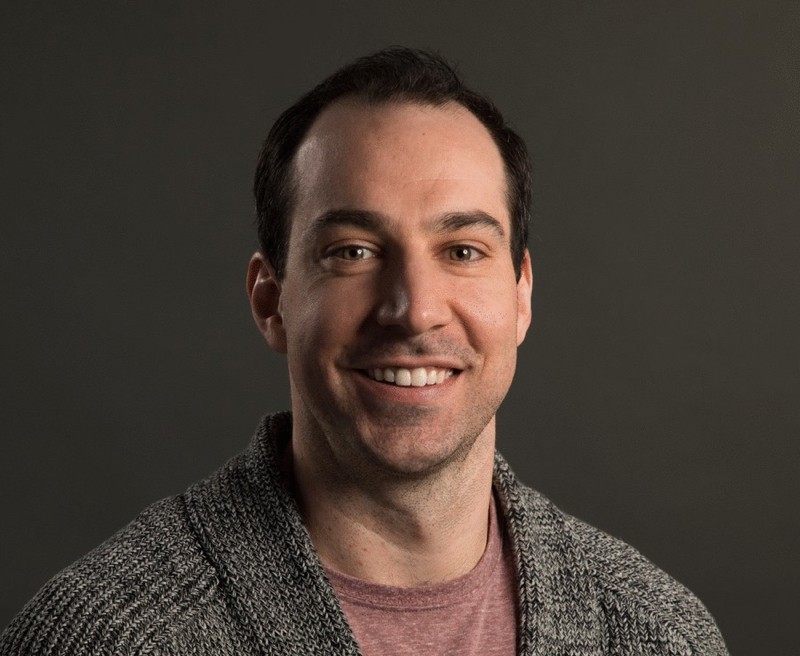Alumni Spotlight – Andrew Wall
Meet Andrew Wall, Wake Forest University class of 2008. While at WFU, Andrew worked in biophysics with Dr. Jed Macosko and Dr. George Holzwarth and later in condensed matter laser physics with the late Dr. Richard Williams. He now works at Microsoft where he’s helping engineer the future roadmap of Microsoft’s Azure Cloud datacenters.

Prof. Macosko: What are you doing now career-wise?
Andrew: I’m currently working as a technical advisor at Microsoft in our Cloud and AI division. I initially joined Microsoft as an optical engineer working on HoloLens 1 and 2, and then spent a couple years in Microsoft Quantum, helping our hybrid team of researchers and engineers develop the hardware system necessary to support topological quantum computing. My current role works across a portfolio of hardware products and technology, and the organization that I support is responsible for the planning, architecture, engineering, and deployment of all of the hardware systems and infrastructure that are delivered into the Microsoft Cloud datacenters.
Prof. Macosko: What did you do right out of Wake Forest?
Andrew: I had the amazing opportunity of working in two different research labs at Wake that helped me appreciate how much I enjoyed hands-on research and applied physics. I always liked physics that I could see, and I followed this to graduate school at The University of Arizona College of Optical Sciences where I received my Masters and Doctorate in Optical Sciences. During my time in Tucson I learned about everything from geometric lens design (some of the largest telescopes in the world are designed and fabricated in Arizona – some even under their football stadium!), to diffraction and interferometry, laser physics, holography, medical imaging, and quantum mechanics. My research through grad school was in a biomedical imaging lab where I designed multi-modality imaging devices for the non-invasive early detection of cancer, and was a great opportunity to combine some of my experiences from the Macosko and Williams labs at Wake.
Prof. Macosko: How did Wake Forest Physics help you get where you are today?
Andrew: Wake Forest Physics is the ONLY reason I got to where I am today! I always knew I wanted to be an engineer, but I never fully appreciated the value of physics and building an intuition of the physical world. As Wake Forest Philosophy Professor Utley used to say, the world is made up of biology, which can only be understood by understanding chemistry, which can only be understood by understanding physics. My time at Wake pushed me to understand things that I might not have prioritized, and the opportunity to learn physics from many different perspectives, including classes, labs, teaching assistantships, projects, and research, lends itself to a project-based learning perspective that studies continue to show are the most effective way to truly understand a subject. It’s not just about the subject-matter, but also about learning how to apply it, and the professors at Wake do a great job of bringing their practical experiences to bear.
Prof. Macosko: Do you have an anecdote you would care to share either from your time at Wake Forest physics or from afterward relevant to Wake Physics?
Andrew: The very first physics class I took at Wake was with Dr. Macosko, during what might have been one of his early years teaching. We were learning about forces and pressure, and Dr. Macosko asked a student to help him perform the bed of nails demo, fully equipped with the brick and sledgehammer. Between the experiment demonstration and the fact that he put himself in that position, I just couldn’t believe my eyes! He followed the rest of the semester with similar fantastic examples, one of which included the cascading stacked bouncy ball drop to show how kinetic energy can be transferred elastically between objects – I think at least one of the balls ended at the top of the lecture room. I feel like as I’m thinking about these stories more and more come to mind, but a final one to share came during Dr. Carlson’s class when he was teaching us about relativity. After learning about some of the general principles and the relationship between speed and time, I think Dr. Carlson knew everyone’s heads were spinning so he tried to pull everyone back with a fairly simple question, “how long is this object in my hand?” After leaving us to flounder in an uncomfortable silence, he exclaimed “I know somebody in this class is smart enough to tell me how long this meter stick is!”
Prof. Macosko: Is there anything you would like to share with prospective or current students?
Andrew: The first thing I would tell any student at Wake Forest studying physics: HAVE FUN! It can be hard to take a step back with the weight of a full courseload, but this is the time to really enjoy learning something new. Wake’s physics program isn’t just about the courses, but also about the people. Looking back I realize that I took the environment for granted, and I now wish I could just go sit in people’s offices to pick their brains. Some of the most fun I had was learning about Dr. Matthews’ building houses and radios, and Dr. Bonin’s interest in civil war weaponry, and Dr. Carroll’s start-ups. My biggest recommendation would be to take advantage of everything that Wake Physics has put together , and think about new ways of getting involved. More experience is never a bad thing, and the opportunities that Wake has to gain new experiences are endless.
